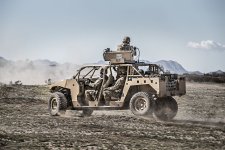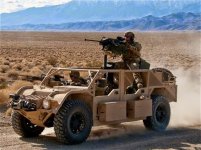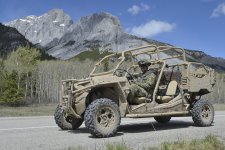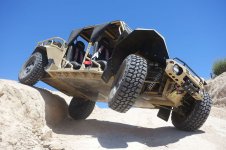Special Operations: Every Second Counts
June 15, 2017: Since 2012 U.S. SOCOM (Special Operations Command) has been seeking a new type of special vehicle; the ULCV (Ultra Light Combat Vehicle). Such a vehicle was meant to deal with several major problems SOCON operators had hummers, even models customized for SOCOM operations.
This led to a competition to win a contract for 1,100 vehicles to replace special SOCOM hummers. Whoever won not only for SOCOM contracts but a lot of export orders as well as a significant number of orders from police and even civilians. This competition produced two finalist vehicles; DAGOR and Flyer 72.
DAGOR is a two ton light truck that can carry 1.4 tons or nine troops. It can be carried inside a CH-47 or slung under a UH-60 helicopter. DAGOR can also be dropped via parachute and be ready to roll within two minutes of reaching the ground. Some are calling this a “21st century jeep” but there are some important differences.
Flyer 72 is a 2.5 ton vehicle that is 72 inches (201cm) wide. It can carry 2.6 tons for a total combat weight of 5 tons. It is open, with a roll cage and no doors so that operators can quickly get out while fully equipped for combat. It can be used with up to nine seats (three front, three rear, two rear deck and one gunner). Top speed is 152 kilometers an hour and range on internal fuel is about 1,000 kilometers cross-country at 64 kilometers an hour on largely flat ground. That can be halved on rough terrain.
Basically SOCOM wants a hummer in terms of carrying capacity but a dune buggy in terms of maneuverability and ease of getting in and out. A major shortcoming of the hummer (for commandos) was the extra second or two it required to get in or out.
While the hummer (or HMMWV) was an improvement on earlier military vehicles it did not address the special needs of SOCOM personnel. Meanwhile the 2.4 ton HMMWV, which replaced the 1.1 ton jeep and 3 ton M37 "3/4 ton" truck in the late 1980s is being replaced by still heavier vehicles of the same size that are designed to absorb combat damage. The World War II concept of the unarmored light vehicle for moving men and material around the battlefield has been radically changed for the regular troops, but not for SOCOM. Special operations were willing to trade protection for mobility, especially since they often travelled cross country and not through places where they were likely to encounter mines or roadside bombs.
What led to DAGOR and Flyer 72 was SOCOM long noting that civilian markets were developing (for recreational purposes) the vehicles they needed. Thus in 2009 SOCOM bought 1,625 Mule 4010 4x4 vehicles, calling them Light Tactical All-Terrain (LTAT) Vehicles, and using them for commandos and Special Forces in combat zones. Basically a dune buggy, LTAT weighs 637 kg (1,400 pounds) but can carry 591 kg (1,330 pounds, including four passengers, plus a rear cargo area and a roof rack). The mule can also tow up to 1,200 pounds (546 kg). Top speed is 40 kilometers an hour, and the fuel tank carries 25 liters (6.2 gallons).
Special Operations troops are very fond of dune buggy type vehicles. These are also becoming more popular as civilian recreation vehicles, for cross country travel. The four wheel drive LTAT can easily be moved by helicopter to wherever, and then let the SOCOM operators move on cross country, often at night (with the driver using night vision goggles to navigate). DAGOR and Flyer 72 take advantage of the “dune buggy” tech to deliver a larger vehicle. Each is expected to cost under $200,000 each when bought in quantity. The main reason for the price (higher than civilian models) is the need to build the military vehicles to a more rugged standard.









